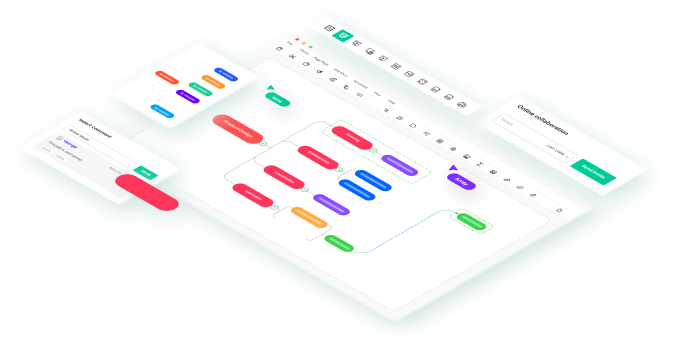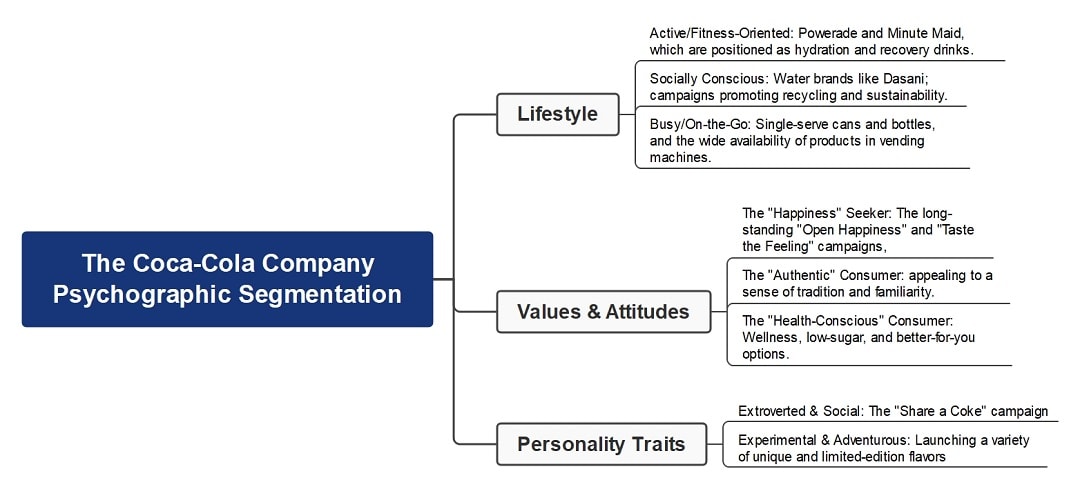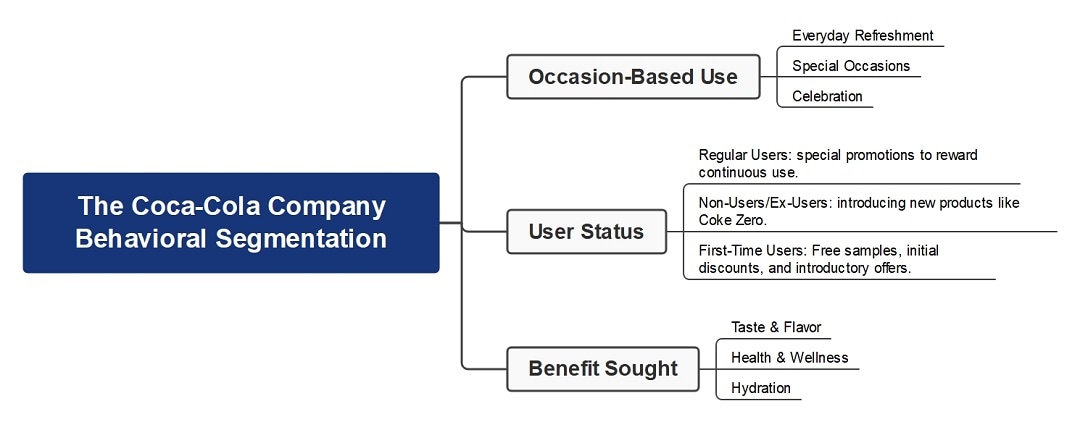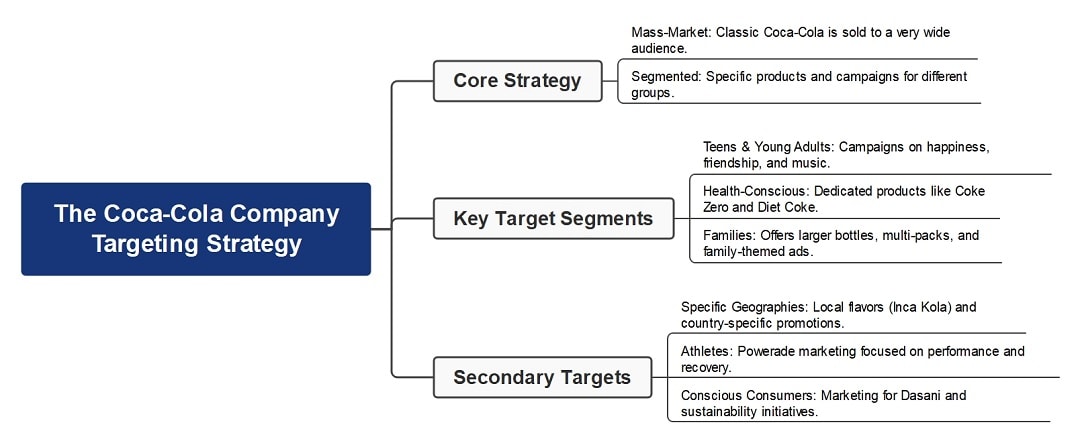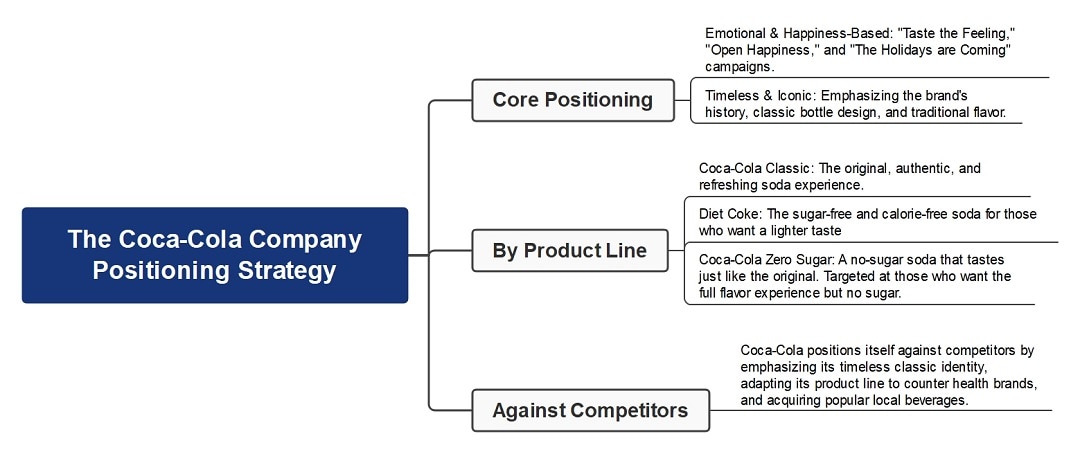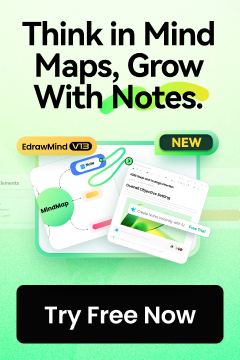Back in the 1920s, the Coca-Cola company started expanding worldwide. Then, President Robert Woodruff made a bold move. He promised every American soldier could have a Coke, no matter the cost. That decision introduced the brand to new markets and changed its story forever. The company now serves over 200 countries and manages more than 200 brands.
If you want to see how careful planning leads to global success by looking at its marketing strategy, you're in the right place. In this article, you'll learn the segmentation, targeting, and positioning (STP) strategies of the Coca-Cola company. Scroll down to learn lessons you can use in your projects, brand strategies, or growth.
In this article
Overview of the Coca-Cola Company
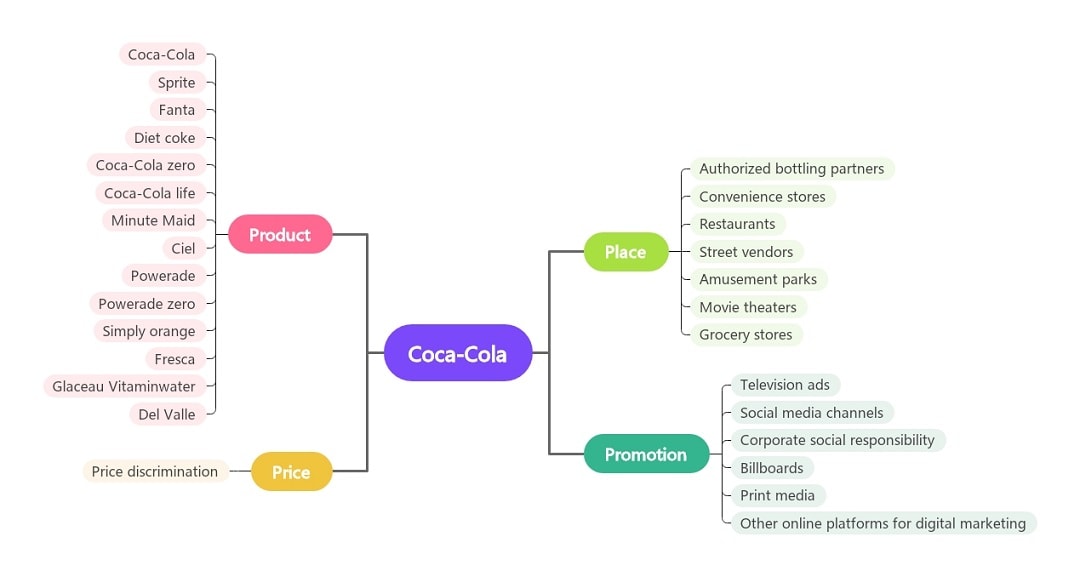
The Coca-Cola company began operating in the state of Georgia in 1886. What started as a straightforward soda fountain beverage immediately became popular.
Shortly thereafter, Coca-Cola was formally incorporated by businessman Asa Candler. From then on, it ceased to be merely a local favorite and began to develop into something much more. Today, the company is no longer a local favorite. Coca-Cola is a global company with its headquarters in Atlanta and under the leadership of CEO James Quincey.
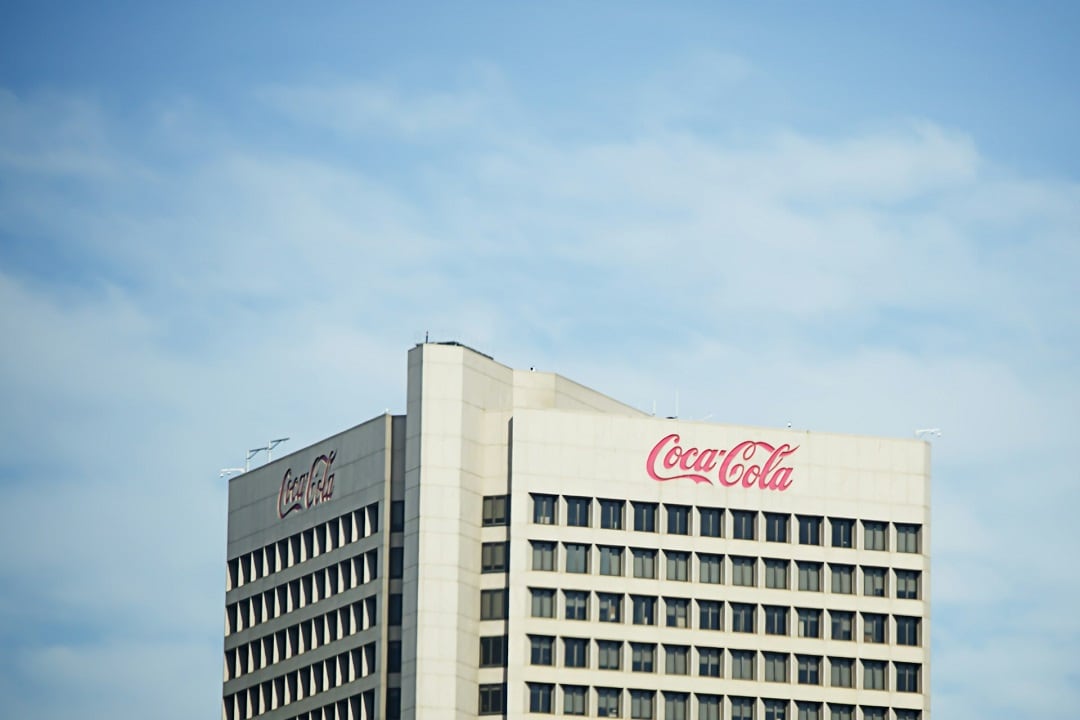
Coca-Cola fits into local cultures by changing its flavors, packaging, and prices to match its market preferences. For instance, in Peru, they offer Inca Kola. In India, it is Thums Up. In Japan, the company offers unique drinks, such as Georgia coffee, in vending machines.
Below is a summary of the Coca-Cola company’s global presence:
| Aspect | Information |
| Started | 1886 |
| Headquarters | Atlanta, Georgia, USA |
| CEO | James Quincey (as of 2024) |
| Net Revenue | $47.1 Billion (based on 2024 report) |
| Brand Portfolio | Over 200 brands including Coca-Cola, Sprite, Fanta, Dasani, Minute Maid, and Powerade |
| Global Reach | Products sold in over 200 countries |
| Key Statistic | Approximately 2.2 billion servings of their drinks are consumed daily |
Market Segmentation of Coca-Cola
Coca-Cola understands that its target markets have varying preferences and customs. That is why they have products that resonate with what each group wants and values. Here are the market segmentation strategies of Coca-Cola.
Geographic Segmentation
Geographic segmentation means splitting the market by location. People in different places have various tastes and habits, and Coca-Cola knows this well. The company doesn’t just sell the same soda everywhere. What it does instead is it customizes goods and advertising tactics based on the nation, area, or even city.
In India, consumers love to drink Thums Up because it’s bold and a little spicy. In Peru, locals stick with Inca Kola, the bright golden drink that tastes sweet and unique. Even in one country, Coca-Cola changes things. Hot places often get bigger bottles so you can stay refreshed, while busy cities get smaller cans that are easy to carry around.
Warmer regions often prefer larger bottles designed for group sharing at home. Rural areas may get returnable glass bottles that are easier to reuse. Meanwhile, urban centers stock sleek aluminum cans for people who want quick, portable options. Even vending machine strategies vary. Japan has vending machines with canned coffee under the Coca-Cola brand, while in other markets, the machines focus on sodas and juices.
Demographic Segmentation
Age, income, and family setup also matter. Coke Classic has always been positioned as a drink for everyone in the family. Coke Zero Sugar appeals more to young adults who want the taste without the sugar. Diet Coke has its own loyal female base that prefers a lighter taste.
Also, Coca-Cola keeps its drinks accessible to all. In developing economies, affordable returnable glass bottles are common. This strategy lowers the price per serving. In wealthier areas, Coca-Cola sells sleek aluminum cans and limited-edition flavors to target those willing to spend more. Families get their share through multipacks and big 2-liter bottles that fit well at dinner tables. Consequently, Coca-Cola ensures that it has a product for almost every budget.
Psychographic Segmentation
Here’s where Coca-Cola really connects. It doesn’t just push products. The Coca-Cola company rarely bases its marketing solely on taste or price. It sells moments and feelings instead.
Take their campaigns, for example. It reminds everyone that even on challenging days, you can find small moments of joy, like opening a Coke bottle after work or sharing one with friends. Taste the Feeling is similar, showing everyday moments, laughing at dinner, having fun with family, or taking a short break to relax.
Coca-Cola also pays attention to personality. It reaches people who love being social, value family time, and like traditions. The ads, packaging, and promotions all reflect this. These design choices reflect stability and trustworthiness.
Behavioral Segmentation
Coca-Cola studies how people use their drinks to make smarter strategies. Some of you grab a Coke to cool down after work, and others enjoy it at parties or family gatherings. Your purchasing patterns are also important. If you frequently drink Coke, you may notice limited editions or new flavors appearing. You may occasionally see special promotions to attract your attention if you purchase it.
Coca-Cola is everywhere during big moments. Celebrations, mealtimes, and social gatherings are prime occasions. Think of their Christmas ads with Santa Claus or those polar bears. These campaigns make Coke feel like a tradition during the holidays. Food pairings also push Coke as the ideal companion for pizza, burgers, or fried chicken, linking the product to everyday dining.
Targeting of Coca-Cola
After the segments are established, targeting is where Coca-Cola determines whom to target. The company also doesn’t adhere to one user base. It opts for a segmented strategy, in other words, producing distinct products and campaigns for each market.
Look at the lineup. You don’t just look at a single Coca-Cola. Coke Classic, Diet Coke, Coke Zero Sugar, Sprite, Fanta, Dasani, Minute Maid, and Powerade appeal to different types of consumers. Coke Classic has this nostalgia and heritage. Diet Coke is considered classy and sophisticated for adults who are counting their calories.
And for young people who aren’t willing to sacrifice taste, there’s Coke Zero Sugar. Sprite engages with teens via upbeat marketing campaigns. Head Note Fanta is the bold, rebellious younger sister of Coca-Cola. Fanta’s fun, fresh personality engages with influential, funky teens who love to experiment and embrace life.
Coca-Cola’s future is tied up in millennials and Gen Z, who are almost always online and follow influencers. They also consume content through social media, music, and gaming. Coca-Cola is pouring money into digital advertising, sponsorships of music festivals, and partnerships with esports organizations. In business, objectives do not only aim at growing the company. In this case, sustaining relevance is a way of corporate strategic planning.
One case in point is the Share a Coke campaign that went viral on social media due to the printing of people’s names on bottles. They sought out their designated bottles, took pictures, and shared them on various social media platforms. While the strategy was basic, it resonated with the younger generation’s need to express themselves.
A second expanding target is the health-conscious consumer. Coca-Cola has diversified its own lineup to move beyond a reliance on sugary sodas. Today, it has bottled waters, including Dasani, and fruit juices, such as Minute Maid, teas, coffees, and energy drinks, such as Powerade. The company has also expanded its low- and no-sugar alternatives across its core soda portfolio.
Positioning of Coca-Cola
Positioning is about shaping how you think about a brand. Coca-Cola positions its products that operate in the business of joy, connection, and refreshment. By associating its brand with good emotions and the fun of being together, it appeals to a broad audience.
Some of the products they offer may cost more than those of their competitors. However, many people still buy them because of the trust, quality, and emotional connection built over the years.
Think about “Share a Coke,” when bottles had names printed on them. Suddenly, Coke wasn’t just a drink. It was a gift. Or remember those heartwarming Christmas ads? They weren’t selling soda. They were selling memories. The brand reinforces this through design, too. Red represents passion and energy. The logo’s script feels timeless and authentic. And the contour bottle? You’d recognize it even in the dark.
How To Make a Mind Map of Coca-Cola STP?
After learning how Coca-Cola does its segmentation, targeting, and positioning, the next step is learning how to map it. Visualizing their strategies helps in clarifying the concept.
Use a Professional STP Maker
When you study Coca-Cola's STP marketing strategies, there are lots of details to keep track of. Wondershare EdrawMind helps you lay out those insights in one visual space. You can group customer segments, map Coca-Cola’s targeting choices, and highlight positioning tactics. Seeing everything in one diagram allows for easier explanation or presentation.
EdrawMind has plenty of built-in templates, icons, and themes to help you create a professional mind map in a few steps. It also provides you with a more effective way of studying big companies like Coca-Cola, even as you get to practice shaping strategies of your own.
Steps To Make a Mind Map of Coca-Cola STP
Step 1: Create a New Mind Map
- Click Create at the top left corner of the main dashboard to open a canvas.
- Select Blank Mind Map to start from scratch.
- Alternatively, head over to the Gallery and choose from ready-made templates that you can tweak to fit Coca-Cola’s STP.
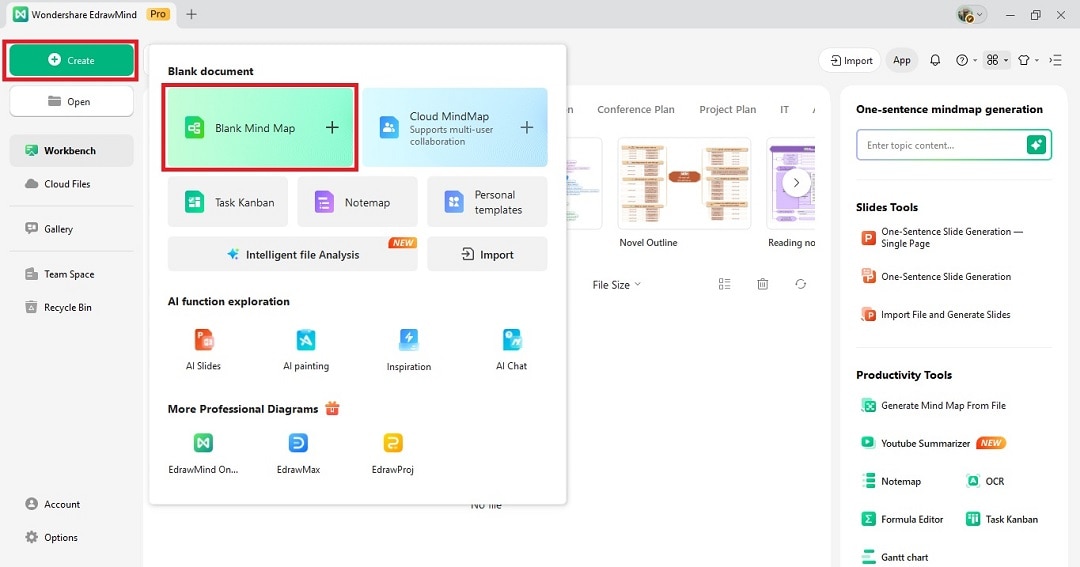
Step 2: Add the STP Details
- Once your canvas is ready, start adding the three main branches: Segmentation, Targeting, and Positioning.
- Select a main branch, go to the Start tab at the top menu, and choose Subtopic under the Topic dropdown list to insert a subtopic.
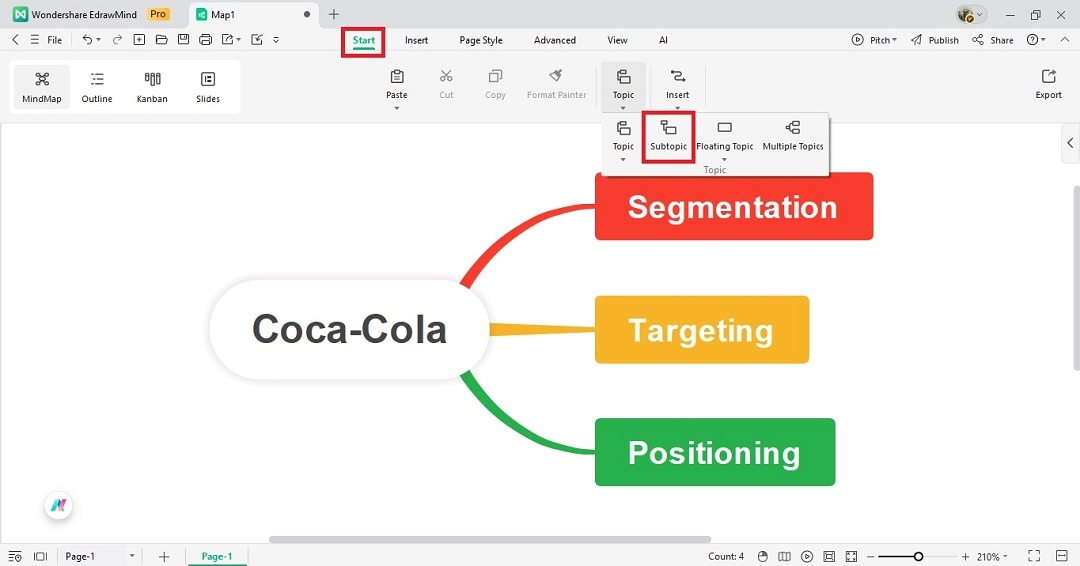
- Under segmentation, you can split it into demographic, geographic, psychographic, and behavioral groups.
- For targeting, note Coca-Cola’s focus on young adults, families, and health-conscious consumers.
- Then, under positioning, highlight how Coca-Cola markets itself as a refreshing and joyful brand with global appeal.
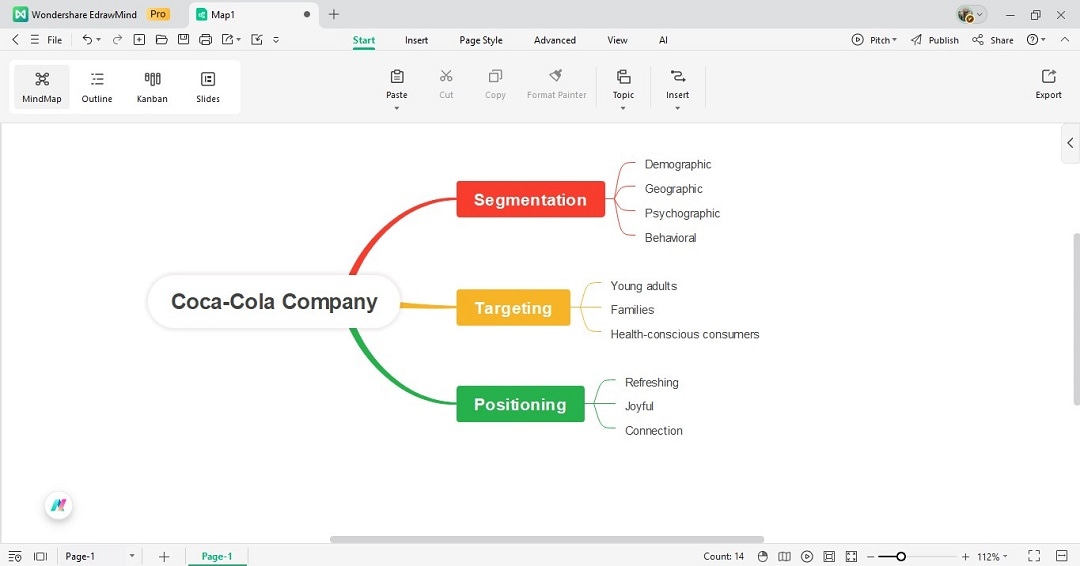
Step 3: Customize the STP Mind Map
- Add icons, change colors, and even insert images or Coca-Cola’s logo for a polished look.
- Open the right panel and go to the Map tab. Here you can change the mind map's Layout, Theme style, and Background.
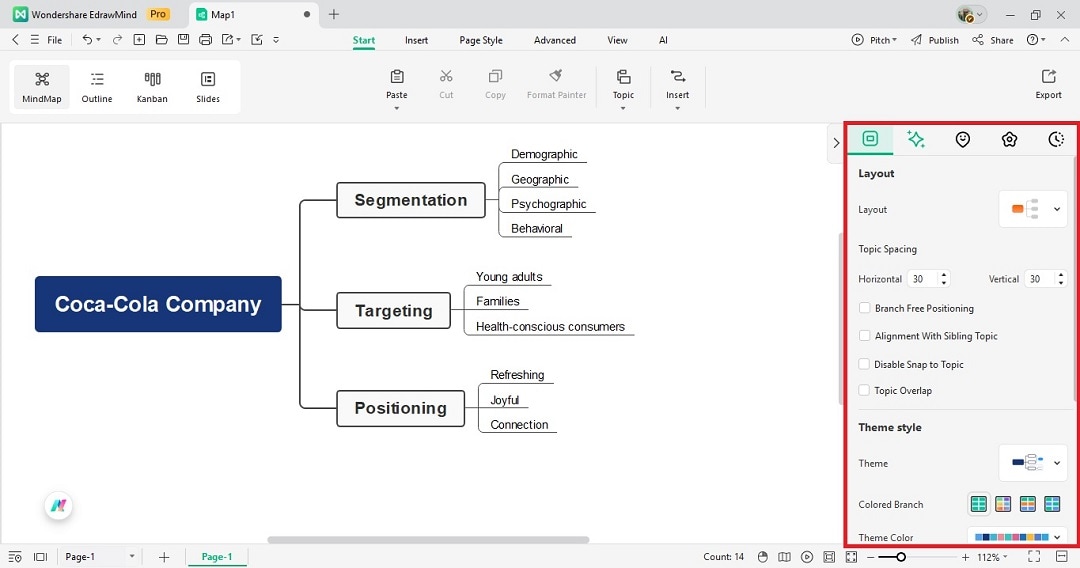
Tips To Make a Mind Map of Coca-Cola STP Marketing
As you construct your Coca-Cola STP mind map, keep these tips in mind:
- Start simple. Do not crowd the mind map at the outset. Just focus on the three core branches: segmentation, targeting, and positioning. You can expand later.
- Use short words or phrases. Your mind map should be easy to scan, not a paragraph of text. Use the keywords “young adults” or “global brand” instead.
- Add visuals. Use icons, colors, or even Coca-Cola’s red to help sections stand out. This means that your mind map is more interesting and easier to remember.
- Connect ideas. If needed, use lines or arrows to illustrate how segmentation powers targeting and how the two link to positioning.
FAQs
-
What Are the 4Ps of Marketing of Coca-Cola?
Coca-Cola follows the 4Ps: Product, Price, Place, and Promotion. Product refers to its wide portfolio of beverages. Price strategies vary from low-cost bottles in developing economies to premium packaging in developed ones. Place means its global distribution network that makes it available almost anywhere, from supermarkets to vending machines. Promotion covers its powerful advertising, sponsorships, and seasonal campaigns. -
What Is the Position Statement of the Coca-Cola company?
Coca-Cola's positioning statement is to make brands and drinks that appeal to people. This includes providing individuals with drinks that refresh the mind, body, and spirit. The company also prioritizes creating a sustainable business that serves its customers, as well as communities and the planet. Coca-Cola, in short, wants to be more than a beverage company. It's about changing something for the better, for good, in the world every day, where you are. -
What Pricing Strategies Does Coca-Cola Use?
Coca-Cola applies a variable pricing strategy; its price depends on many factors, not fixed. In others, it’s about selling at a price that rivals are charging. In other places, it employs value pricing using inexpensive returnable bottles. Prices are also charged on special editions, fancy packaging, or specialty drinks. This flexibility guarantees that Coca-Cola can penetrate consumer groups at various income levels and retain market power.



